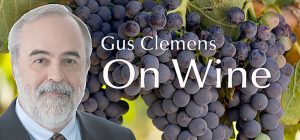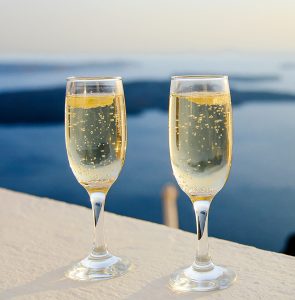People ask what was the most expensive wine I ever received for review. I think their question reflects curiosity about what wine I get to review and how does expensive wine taste. Continue reading “Expensive wine 6-25-2025”
Category: Facts About Wine
What’s with Texas wine? 6-18-2025
Vintage and location are keys to understanding wine in Texas, which now produces the fifth most wine in the United States. Continue reading “What’s with Texas wine? 6-18-2025”
Cava confusion 5-21-2025
Cava is Spanish sparkling wine made using the traditional method developed in Champagne, right? Continue reading “Cava confusion 5-21-2025”
Winery wars 5-14-2025
The wine industry faces the first headwinds it has faced in half a century. Inevitably things get snippy in the previously collegial competition among makers. Continue reading “Winery wars 5-14-2025”
The future of wine 4-30-2025
Wine has been a staple of food and culture for 8,000 years. It is not going away. But the wine industry’s exhilarating days of the past 50 years are fading. Let’s explore. Continue reading “The future of wine 4-30-2025”
Questions and answers 4-23-2025
Answers to common wine questions: Continue reading “Questions and answers 4-23-2025”
Questions and answers 4-16-2025
Some answers to common questions:
• What does “fruity” and “sweet” mean in a wine review?
They are two different concepts. Fruity or “fruit-forward” wine is one where fruit flavors dominate over other flavors such as vanilla, oak toast, minerality. Sweet wine has perceptible residual sugar because not all of the grape sugar was converted into alcohol or sugar was added after complete fermentation.
Confusion arises when a dry wine with little or no residual sugar has very ripe fruit flavors. Our minds and tastebuds associate vivid fruit flavors with sweetness. We think the wine is sweet, even if lab results show there is little or no residual sugar. Most table wines are dry or off-dry (0-35 g/L). Dessert wines such as sauternes, porto, and sherry usually have significant residual sugar (120 or more g/L).
• What do “perlage,” “mousse,” and “bead” mean in sparkling wine?
Broadly, they all refer to the bubbles. Perlage can indicate finer, softer, smaller bubbles. Mousse can imply creamier bubbles. Bead can refer to the trail of bubbles rising in the glass. There is no hard definition and the terms can be used interchangeably.
• What should I do if I break my wineglass at a restaurant?
Notify a staff member immediately. No need to be embarrassed or make excuses; this happens all the time. The staff will want to clean it up themselves so you won’t cut yourself and make the situation even worse. The staff has the tools and experience to make the problem go away quickly. You might sweeten the tip, however.
• What is “structure” in a wine?
Structure is an abstract term that is hard to define. Structure is about the relationship between all the components in a wine—tannins, acidity, alcohol, body, glycerol, and more. When a wine has “good structure” it means all the parts work together harmoniously. Tannins are the base element of wines with good structure, but structure is the sum of all the parts of a wine. You may not be able to define it, but you will know it when you taste it.
• How do I open a bottle of wine with a wax seal?
Ignore the wax seal, insert the worm through the wax into the cork and twist it down. Pull the cork. The wax seal will shatter to bits and fall away. If some wax clings near the opening, peel it away before fully pulling the cork.
Last round: May your troubles be less, your blessings more, and nothing but happiness come through your door. I think that means a wine delivery. Wine time.
Domaine Sigalas Santorini Assyrtiko 2022
Pale straw color; lemon-lime, peach, grapefruit, pineapple, passion fruit, pear, crushed sea shells, minerality, saline on the nose and palate. Continue reading “Domaine Sigalas Santorini Assyrtiko 2022”
Wine complexity 4-9-2025
Wine has an image problem that is both its biggest asset and its Achilles heal. Wine is the most complex alcohol drink. Continue reading “Wine complexity 4-9-2025”
Kopke 20 Years Old White Porto
Golden amber color; dried apricot, orange marmalade, raisin, grapefruit, lemon-lime, honey, fig, walnut, toasted almond, caramel, butterscotch, marzipan on the nose and palate. Continue reading “Kopke 20 Years Old White Porto”


